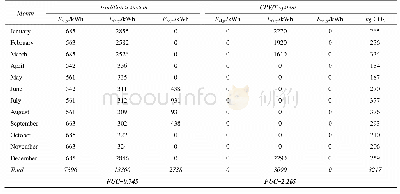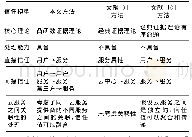《Table 1Differences between WPPC and traditional pollution-control methods.》
 提示:宽带有限、当前游客访问压缩模式
提示:宽带有限、当前游客访问压缩模式
本系列图表出处文件名:随高清版一同展现
《基于高效清洁生产的全过程污染控制(WPPC)——中国钨行业典型案例研究》
As shown in Fig.3,the whole process,from raw materials to product/intermediate product,can be divided into four steps:conversion,separation/purification,product preparation,and waste treatment.By mapping the energy and material distribution/flow in each step,the consumption details can be identified for each step of the process.The comprehensive cost is then determined using Eq.(1).During conversion,extraction of the target metals from the corresponding mineral/waste material occurs;this process may include several operation steps based on the process design.In separation/purification,impurities are removed from the target materials.If hydrometallurgical leaching is applied to process the raw materials,solvent extraction or ion exchange could be used in this step.If smelting of the raw materials is applied,purification should be conducted based on high-temperature refining or electrochemical refining.After purification,the product preparation varies depending on the form of the product.The waste treatment step requires significant attention in order to lower the environmental impacts of current primary metal production.The cost can fluctuate significantly in this step,even in the same area,depending on the regulations and management efficiency[25].The cost indicator of a specific step such as leaching/smelting,CE,can be calculated by summarizing the cost(including materials and energy)of all the steps in the section.The difference in the cost indicator provides a guideline for evaluating the significance of the process optimization of a specific step,where a decrease in value indicates an improvement in the efficient utilization of materials and energy.
| 图表编号 | XD001946600 严禁用于非法目的 |
|---|---|
| 绘制时间 | 2019.08.01 |
| 作者 | 曹宏斌、赵赫、张笛、刘晨明、林晓、李玉平、宁朋歌、孙家君、张懿、孙峙 |
| 绘制单位 | Beijing Engineering Research Center of Process Pollution Control and National Engineering Laboratory for Hydrometallurgical Cleaner Production Technology, Division of Environment Technology and Engineering, Institute of Process Engineering, Chinese Academ |
| 更多格式 | 高清、无水印(增值服务) |
查看“Table 1Differences between WPPC and traditional pollution-control methods.”的人还看了
-

- 表1 0 综合管廊与传统直埋管线的费用比较Table 10 Cost comparison between traditional buried piping and urban utility tunnel





